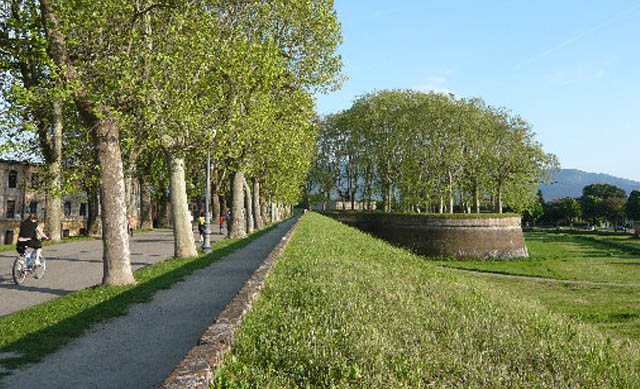
Lucca è una graziosa città in Toscana ovest di Firenze. Ci vado spesso con i miei programma di Italian language immersion. Quello che rende Lucca speciale è le mure che circonda la città. Nella lingua italiana ci sono molti modi per parlare di muri. Diamo uno sguardo ad alcuni vocabolario per esprimerci in modo corretto. Poi ci spiego un po’ della storia delle mura di Lucca.
Lucca is a lovely little town in Tuscany just west of Florence. What makes it special is the wall that surrounds the town. In the Italian language there are many ways to talk about walls. Let’s take a look at some Italian vocabulary in order to express ourselves properly. Then I want to tell you a little about the history of Lucca’s walls.

The walls of a house in Italian can be expressed like this:
la parete / le pareti = inside wall of a house, a partition, a lining
il muro / i muri = a structural wall
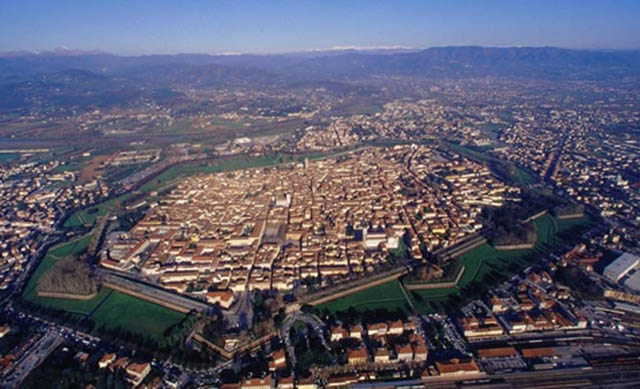
But wait! It gets a little more complicated when
you are talking about the walls of a city
A questo punto avete capito bene le sfumature della parola “wall” in italiano e siete in grado di parlare tranquillamente dei muri di una casa o di come appendere un quadro alla parete. Ma aspettate! La situazione diventa un po’ più complicata quando si fa riferimento alle mura di una città, naturalmente intendo che la parola diventa un sostantivo irregolare!
At this point, you think you have that all sorted out and can easily talk about the walls of a house or hanging a picture on the wall. But wait! The situation gets a little more complicated when you are referring to the walls of a city and by complicated. The word becomes an irregular noun!
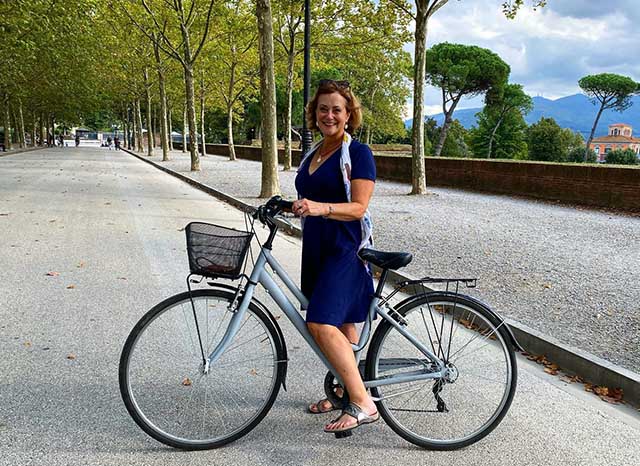
Per fare riferimento a un muro nel senso di una fortificazione di una città si utilizza la parola / To refer to a fortified city wall you use the word: le mura = city walls, ramparts
Per fare riferimento specificamente alle mura di Lucca, si può dire:
To refer specifically to Lucca’s walls you can say: una cerchia di mura = a circle of walls
Finché si ricorda che le parole che si usano per descrivere le grandi mura fortificate, come quelle che circondano la città di Lucca, sono irregolari (come le parole: uova =the eggs, le braccia = the arms, le labbra = the lips) tutto andrà benissimo!
As long as you remember that the word that is used to describe large fortified walls, such as those that encircle the city of Lucca, is irregular (like the words: le uova =the eggs, le braccia = the arms, le labbra = the lips) you will be just fine!
Lucca fu fondata dagli Etruschi e poi divenne una colonia romana e ci sono ancora tracce visibili delle antiche mura romane. Durante il Medioevo sono state iniziate nuove mura e hanno continuato a crescere insieme con l’espansione della città. L’ultima fortificazione della città è stata generata da una minaccia percepita dai Medici di Firenze e il lavoro fu ripreso sulle mura nel 1545 ed è terminato nel 1650. Per consolidare l’enorme massa di terra, sono stati piantati degli alberi in cima delle mura.
Lucca was founded by the Etruscans and then became a Roman colony and there are still a few traces of the ancient Roman walls visible. During the middle ages, a new wall was begun and the walls continued to grow along with the expansion of the city. The last major fortification of the city was driven by a perceived threat of the Medici’s of Firenze and work was resumed on the walls in 1545 and finished in 1650. To consolidate the enormous mass of earth, trees were planted on top of the walls.
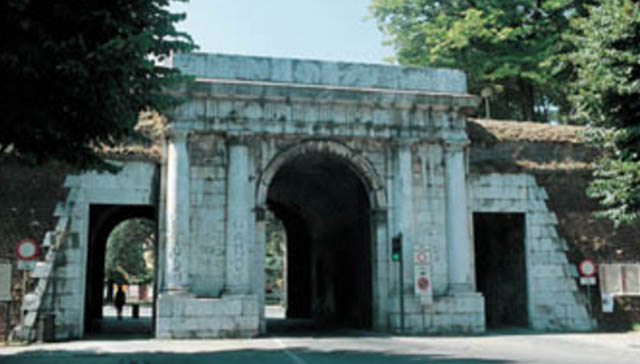
Impressionante come le mura di Lucca non siano state effettivamente utilizzate per scopi militari. Invece sono state un grande aiuto per proteggere la città dalle esondazioni del fiume Serchio, probabilmente una nemesi più fastidiosa rispetto alla minaccia della famiglia Medici. Durante l’epoca di Napoleone, le mura furano smilitarizzate e nel 1809 la sorella di Napoleone, Elisa Baiocchi costruì l’ultima porta – Porta Elisa nello stile neoclassico. Ma fu Luisa di Borbone, con l’aiuto dell’architetto reale Lorenzo Nottolini, che trasformò le mura di Lucca in un parco splendido.
As impressive as the wall of Lucca may be, the ramparts were never actually used for military purposes. It does help however protect the city from the overflows of the Serchio river probably a bigger nemesis than the threats of the Medici family! During the Napoleon era, the walls were demilitarized, and in 1809 Napoleon’s sister, Elisa Baiocchi built the Porta Elisa in the neoclassical style. But, it was Luisa of Bourbon, with the help of the royal architect Lorenzo Nottolini, who transformed the walls of Lucca into a delightful park and playground.
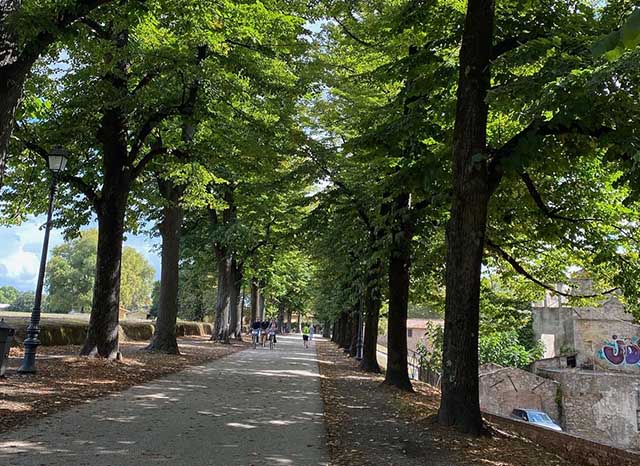
Non vedo l’ora di fare delle passeggiate sulle mura. Infatti un giorno abbiamo in mente di fare una gita in bici e ci fermeremo sulla cima per fare una cenetta romantica con vista sulla città! Faccio tante foto e anche se sono una frana qualche volta, faccio del mio meglio per non cadere dalle mura!
I’m looking forward to taking long walks along the Lucchesian walls. In fact one day we plan to take a bike trip along the walls and stop for a romantic picnic with a lovely view of the city. I’ll take lots of pictures, and even if I’m clumsy sometimes, I’ll try my best not to fall off the wall!
Want to participate in the 2017 Lucca Italian Language Immersion Program? Join me this June 4-14. Program details Click here
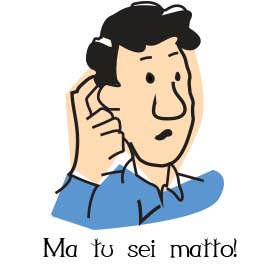

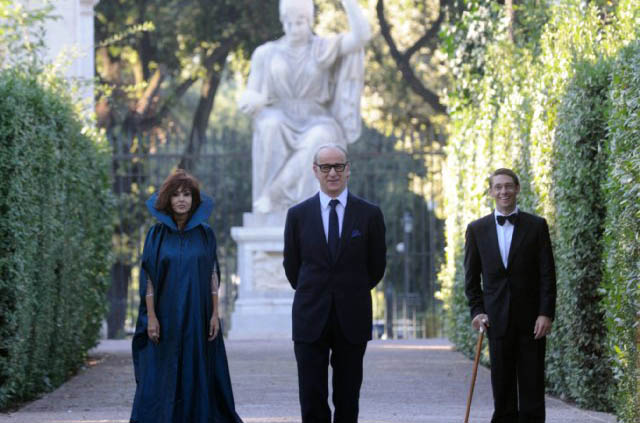
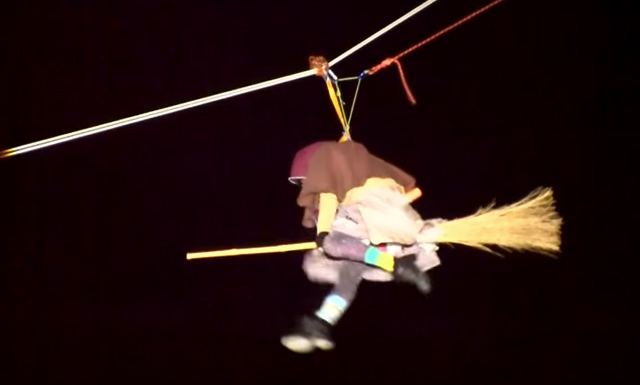
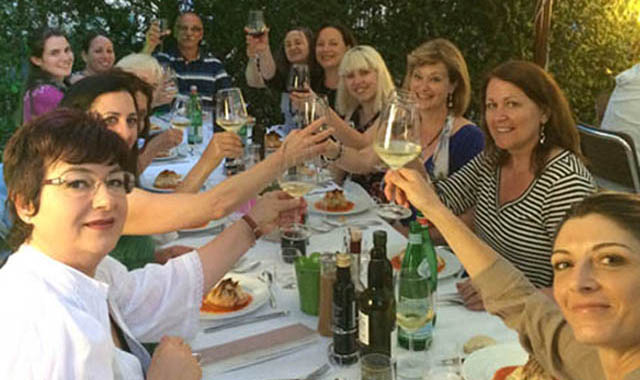
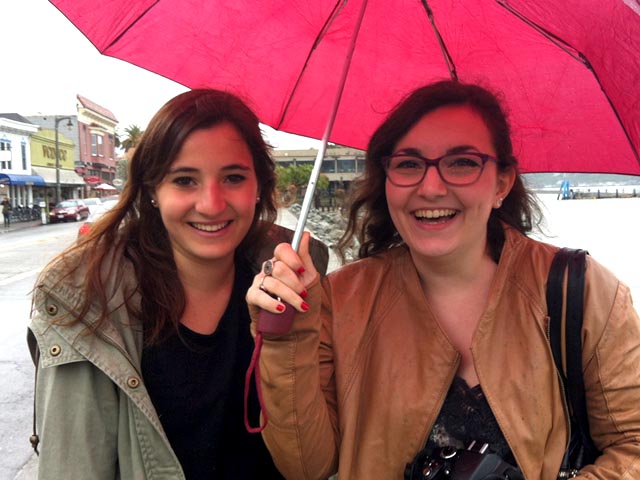






Sono caduta dalla bici due volte! Una volta quando scendevo un sentiero dalle Mura e una volta nel centro storico. Cadere dalla tua bici dev’essere un segno sicuro che siete un turista. Che imbarazzante!
In bocca al lupo! Buon viaggio!
Sono stato a Lucca tre o quattro volte, in occasione di Lucca Comics e ho sempre fatto il turista; è una bellissima città 🙂